Truth And Lies About the SI3 Diamond Clarity Grade
So, what’s an SI3 grading? At some point in time, I am sure most people searching for diamonds in local or online stores would have stumbled upon this term. You might had even come across SI3 deals that are way cheaper and seemingly more generous than the usual GIA/AGS offerings.
And yes, that deal is too good to be true.
As a consumer, if you ever think you can get an upper hand in a deal against a jeweler who knows their stuff, think again. Jewelers are not stupid. If something sounds too good to be true, you need to be smart and be wary.
Let’s do a quick recap on the clarity grading chart that GIA created. From left to right, you have clarity grades ranging from Flawless (FL), Internally Flawless (IF), Very Very Slightly Included 1 & 2 (VVS1 & VVS2), Very Slightly Included 1 & 2 (VS1 & VS2), Slightly Included (SI1 & SI2) and Included (I1-I3).
So, where does the SI3 clarity grade fits in?

A Little History And Background
The SI3 clarity grading was created by a man called Tom Tashey when he was head of the EGL-LA lab back in the 90’s. In essence, the SI3 grade works like a band-aid to help the industry differentiate the better I1’s (eye-clean) from the other included diamonds.
On paper, that sounded like a good idea if it was implemented properly. However, due to the amount of money involved when dealing with diamonds, it soon became an avenue for abuse.
You see, if you were to take the same exact (SI3) diamond graded by EGL to GIA, it would most likely receive an I1 or worse grade at GIA. It’s no wonder that GIA or any other major labs around the world won’t recognize SI3 as a clarity grade. And in my humble opinion, neither should you as a consumer.
Wait, If It is So Bad, Why is There an Existence of the SI3 Grading?
Due to way GIA had established the clarity scale, consumers have a mindset that anything lower than an SI clarity grade is undesirable. Most people automatically shun I1 or I2 diamonds like taboo as it would usually mean a diamond with obvious flaws to the naked eye. Now, as a jeweler who wants to capitalize on making money with lower grade diamonds, what would you do?
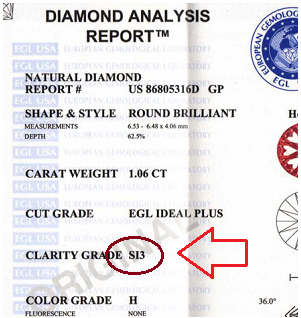
You use a misleading nomenclature to confuse consumers and that’s exactly how the SI3 grade got manipulated. With a new clarity grade that blurs the line between I1 and SI2 diamonds, jewelers are now suddenly able to pass off inferior I1 stones as slightly included (SI) diamonds. All it takes for them is to get these diamonds graded softly by EGL!
In a nutshell, the SI3 grading is created to help jewelers sell more diamonds. This is because of the mindset consumers have about slightly included (SI) diamonds being OK while included diamonds aren’t.
As a consumer, an SI3 clarity rating in an EGL report isn’t all you need to worry about. Their unreliable grading practices in color and cut are big red flags as well.
Is It Really All That Bad?
While the majority of I1 diamonds have issues with durability and being eye clean, there do exist a small minority of GIA graded I1 diamonds which will face up totally clean to the naked eye. This requires each diamond to be judged on a case to case basis and rarely happens.
Likewise, you can find decent looking SI3 diamonds if you look hard enough but the odds are highly stacked against your favor. The bottomline is that an SI3 grading is nothing more than a glorified I1 grading.
Check out some real life examples here and you will see what I mean…
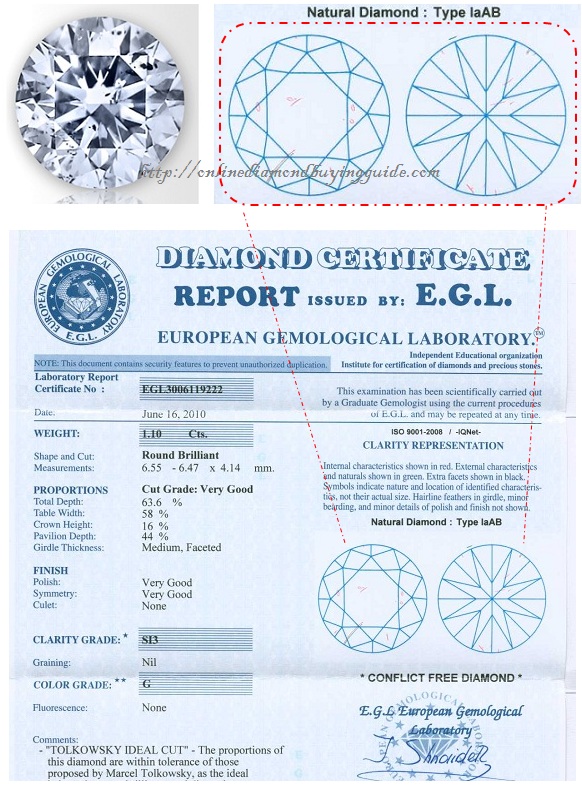
Seriously? The grading standard is a joke… Inclusions are “conveniently omitted” in the plot diagram. Ask yourself the following question: Does the plot reflect the real stone accurately?
To show you the earlier example isn’t a fluke and that EGL is consistently undergrading stones sent to them, here’s another atrocious example. I had also included a magnified photograph of the diamond for your reference…
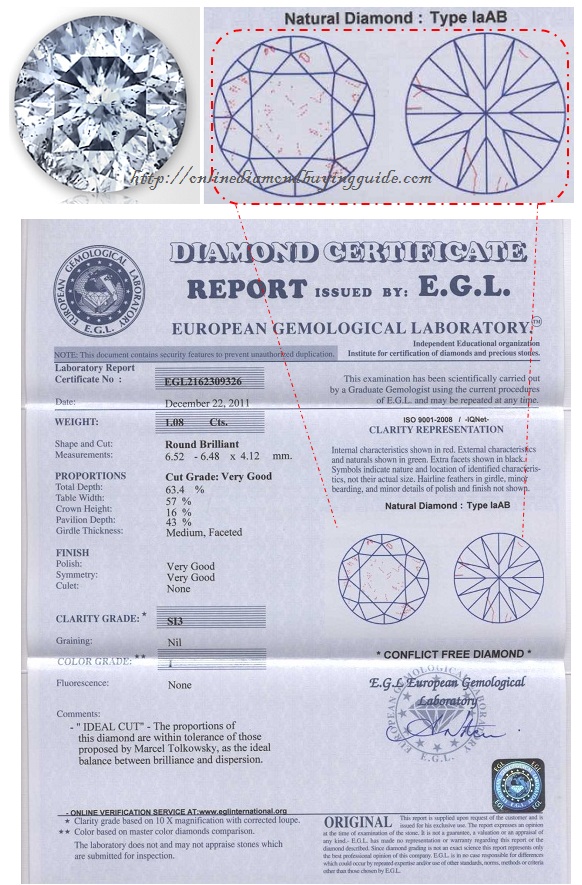
SI3 my a**, how is this diamond different from an I2 or I3 grade assigned by GIA?
Unless you are experienced in the trade or have a knack for inspecting diamonds, lady luck won’t favor you on landing a good deal with SI3s. Jewelers are smart enough to send a diamond to GIA if it fully deserves an SI2 from them. To “bump” the grades of inferior I1s, they send them to EGL so that it returns with a certificate that has nicer looking grades (SI3).
My final advice? Avoid SI3 diamonds as you are likely to end up paying more for something that only looks better on paper. Let the jewelers play their game of selectively choosing grading labs for all they want.
As an educated consumer, you will be better off sticking to certifications from GIA or AGS even if that means buying an GIA/AGS I1. At least the grading is consistent and you are actually paying the correct price for the stated quality.
Related Articles
Leave A Comment

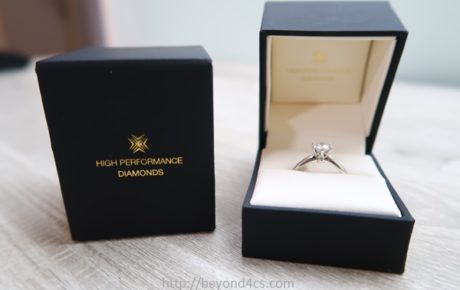

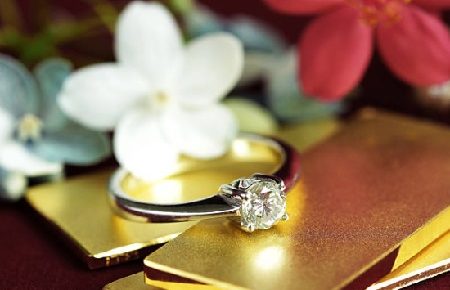
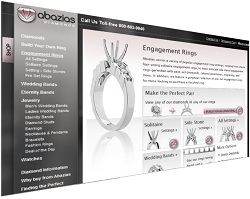









14 Comments
I saw an eBay listing with an EGL certification of an SI3 diamond. It’s quite peculiar as it was stated in the listing that the diamond had H/I color. Anyways, now that I had read this, I am having second thoughts about the ring.
Yep. I would advice you to stay away as I smell a rat. It’s bad enough that the certification is from EGL. The listing of H/I color is a serious red flag. A proper listing shouldn’t be shown as a range of 2 colors.
Hi Paul: I fell for the SI3 trick a few years back. The minute I brought the stone home I knew I had made a mistake. She just continued to talk it up. Any way, the Jeweler took the stone back and traded me for a beautiful GIA G, VVS1 stone that I absolutely love! I caution anyone to think twice about this silly SI3 grading.
Hi Paul. I have a so called SI3 2.36 carat diamond with their discription of color an E/F mounted on a very pretty 3 row diamond band clarity I1-2 color on 34 small diamonds H/I color, weight 1.62. Having it home with time to look it over and decide whether I like it or not I have noticed things I am not happy with. I see all the very small fizz like inclusions but the diamond is very white and sparkly. The small diamonds appear more yellow on band with the diamond mounted on the ring. After reading your page I have learned a great deal about the SI3 questionable rating. As pretty as the setting is I’m afraid I will have to return this diamond and definitely look for a SI1-2 or possibly better diamond. Thank you for your guidence.
I recently purchased Le Vian chocolate and white diamonds. The color and clarity is HI/SI2-SI3. Is this good?
Who graded the diamonds? The SI3 rating doesn’t forbade good things.
Hello, can I ask a question regarding my diamond ring. It was purchased from LMG in 2009. I have sent it via Samuel Jewellers to have the claw mounts rebuilt. The company repairing it have called me to explain that there is a flaw between 2 of the claws and the stone could crack when under pressure during the rebuild. The description of the ring is 18ct white gold ring set with a single round brilliant cut diamond approx 1.12ct assessed as H/I colour, S13-PK1 clarity.
I am not sure what I should do as I risk devalueing the stone.
I don’t understand how the stone can get cracked during a rebuild without seeing the issue in person. I would recommend following the advice of the jeweler as they had seen the ring in person and will be in a better position to offer solutions.
I had an appraisal done on a piece containing 51 round brilliant cut diamonds (2.70-2.10×1.45mm) aprox total weight 3.00ct. Clarity SI-1 to SI-2. Colour G, Good cut. I used 50 of the same diamonds to make earrings. I had earrings appraised. Diamonds measured (2.60-2.20×1.50mm) approx total diamond weight 2.50ct. Clarity SI-3 to I-1. Colour H Very Good Cut. The appraisals were done by the same appraiser. My biggest concern is the change in clarity to SI-3 – I1 and difference of .50ct diamond weight. I would appreciate knowing why the changes?
You should ask your appraiser about this. It’s no surprise to me because SI3 is usually the equivalent of GIA’s I1 or worse.
After reading all the concerns and comments I have a good idea of what to look for in a diamond. Color and clarity.
My personal jeweler recently sold me a 3ct round G SI2 EGL graded diamond that was set in a halo Simon G setting. I paid 21,200 for the ring with the knowledge I was going to pull the stone and have it redesigned because I am not a fan of halo’s. However, I was concerned as how “dark” the stone looked around the halo and I insisted to him to send it to GIA. The report came back as H I1, good cut, excellent polish/symmetry, no fluorescence. The clarity characteristics came back with a very large amount of long red lines (twinning wisp, feather, crystals, needles). The long red lines are alarming to me. I have yet to see “my” stone unmounted and I have told him I must see it this week. That’s another long story. Anyway, I feel I have made a huge mistake and should have gone with my gut that it was too dark for a reason and I should stay away. Now I’m concerned as to it’s durability due to the “lines”. May I please send you the GIA report for you to see for yourself? thank you so much and my apologies for such a long message.
Well EGL is a scam and that diamond coming back with a good cut (which in fact really means garbage cut quality) and having I1 clarity tells you the kind of diamond your jeweler sold you. You got ripped off. And I see the mistakes compiling up. Why would you want to buy a completed diamond ring only to have the ring redesigned? It’s foolish and you should have just purchased the finished ring design you like with a properly graded diamond from GIA or AGS from the onset. My advice to you is to get a refund and NEVER do business with this scumbag of a jeweler again.
GIA doesn’t declare SI3 as a clarity grade. Back in the day I called it a glorified I 1.